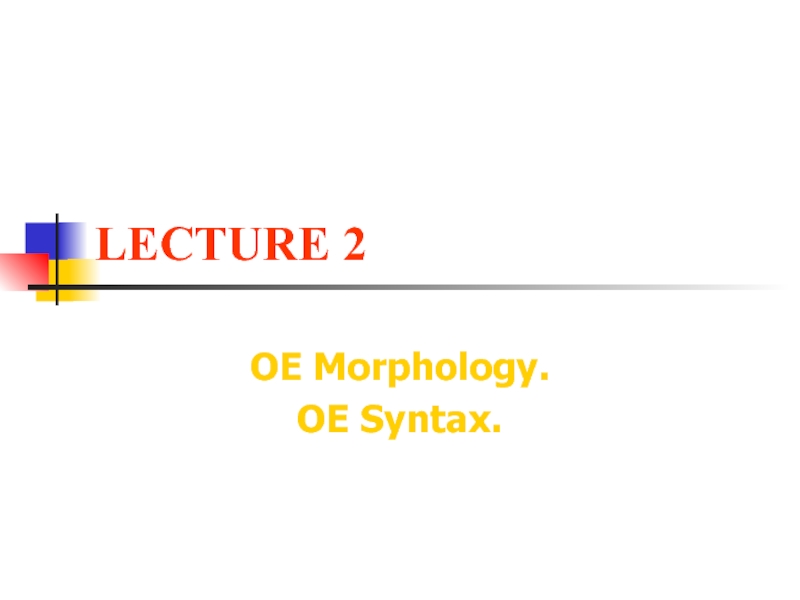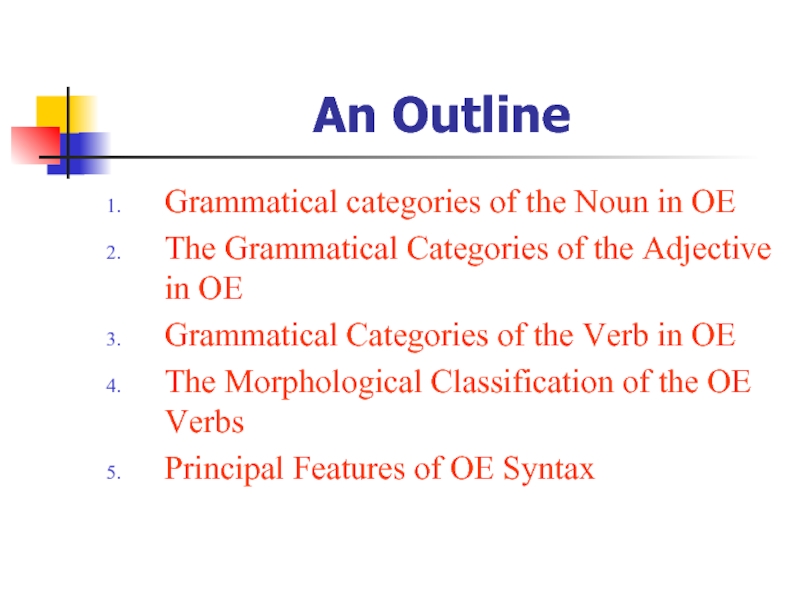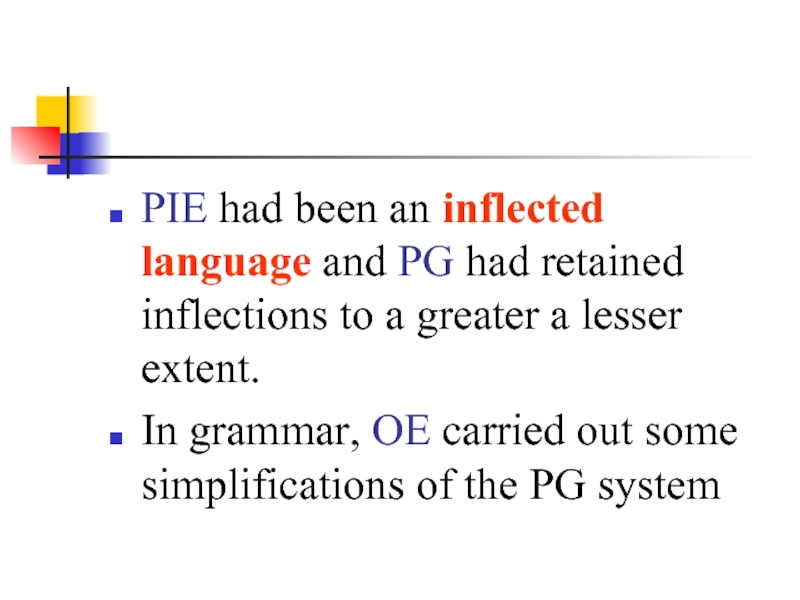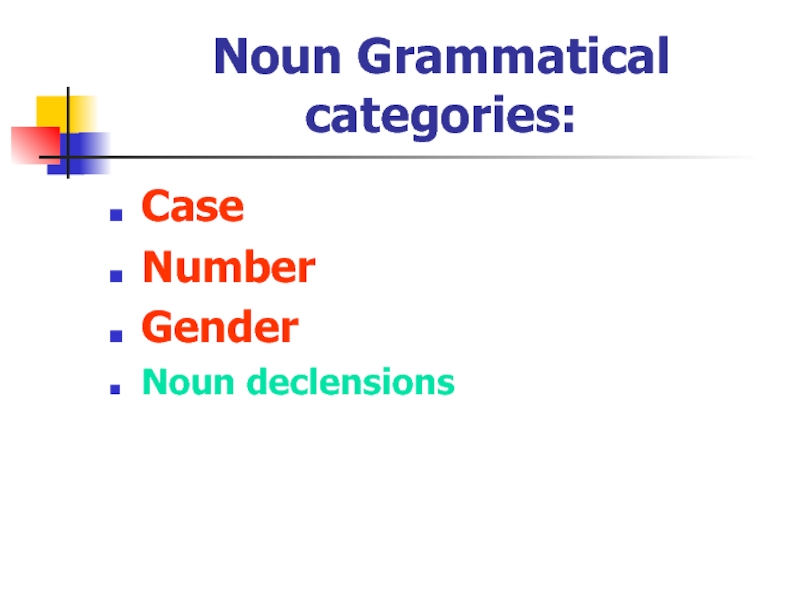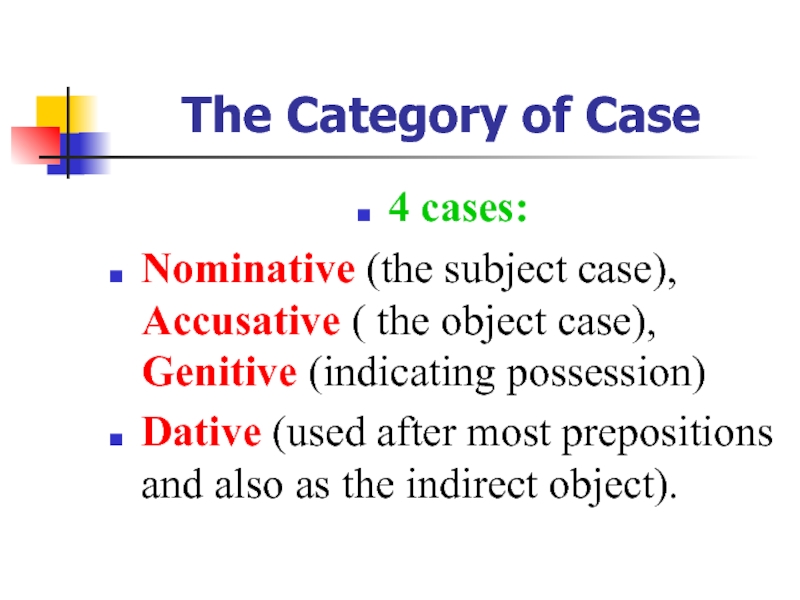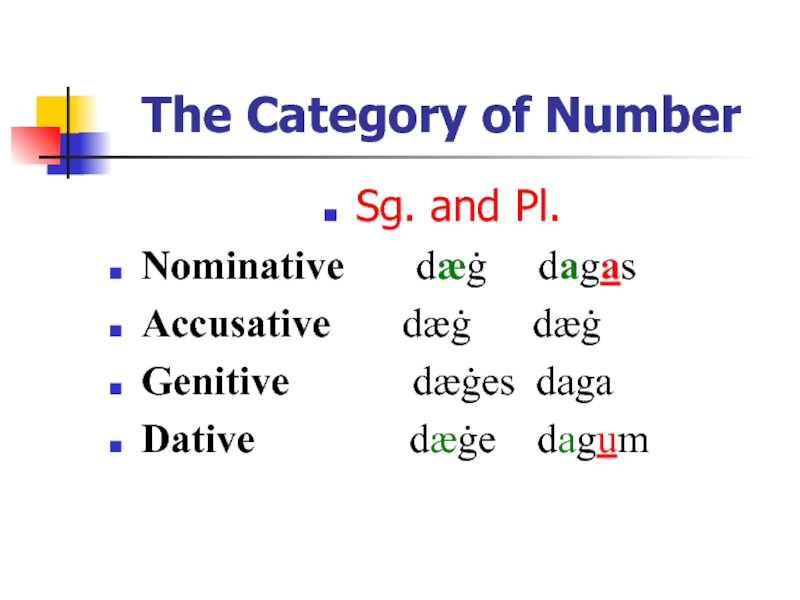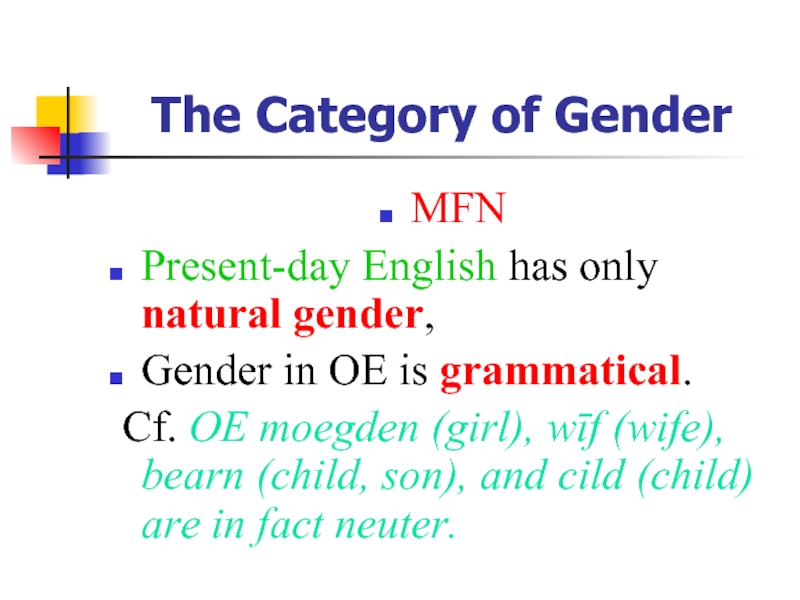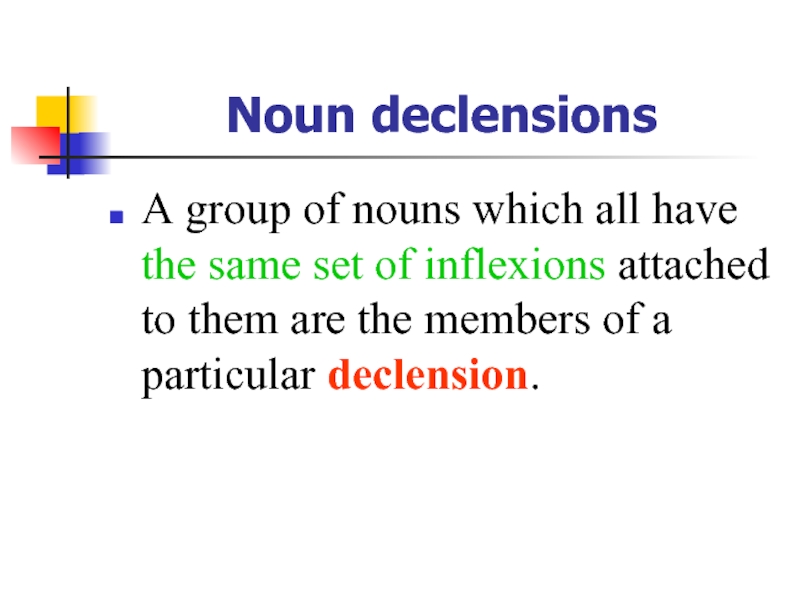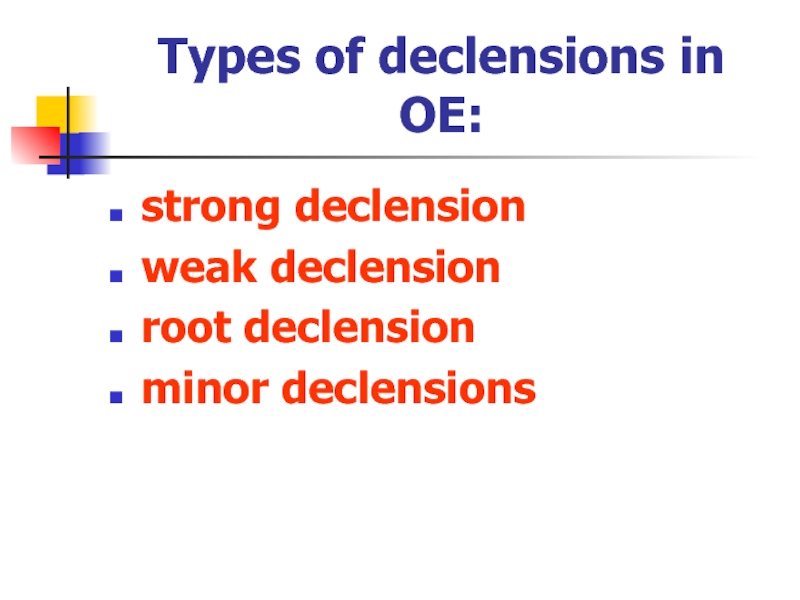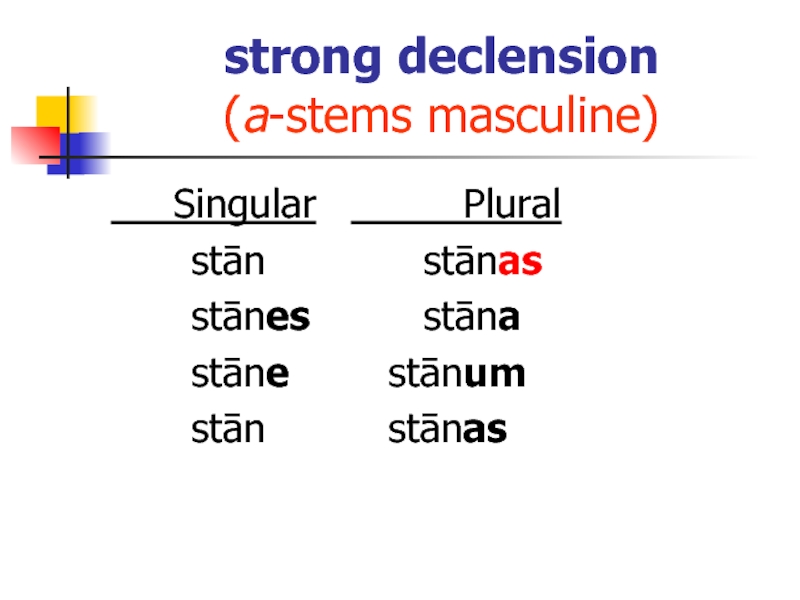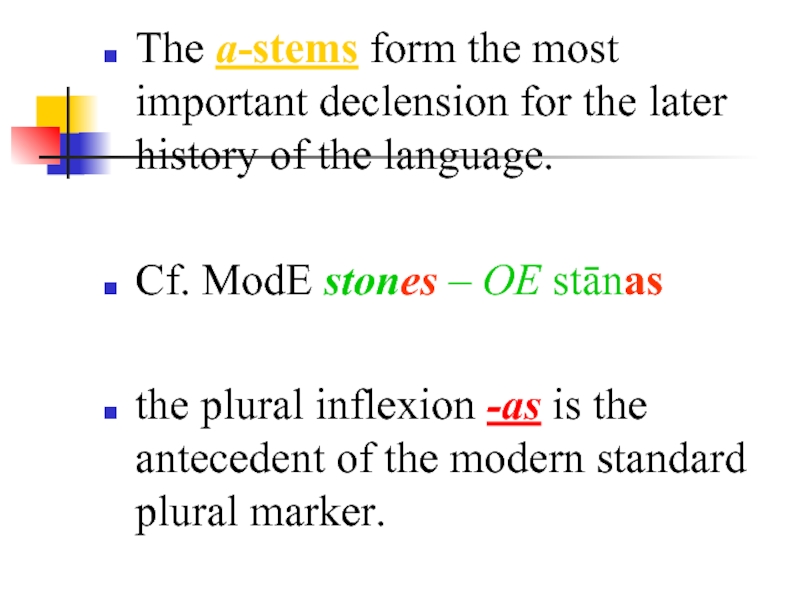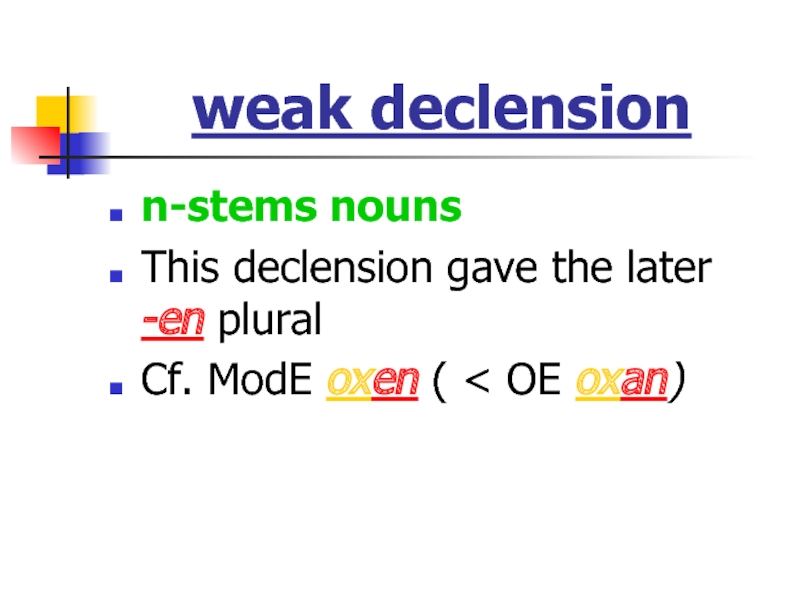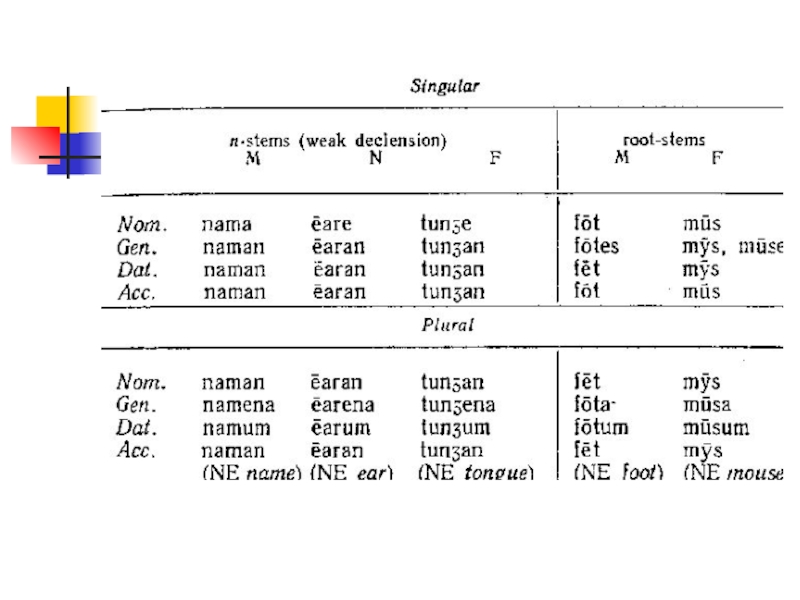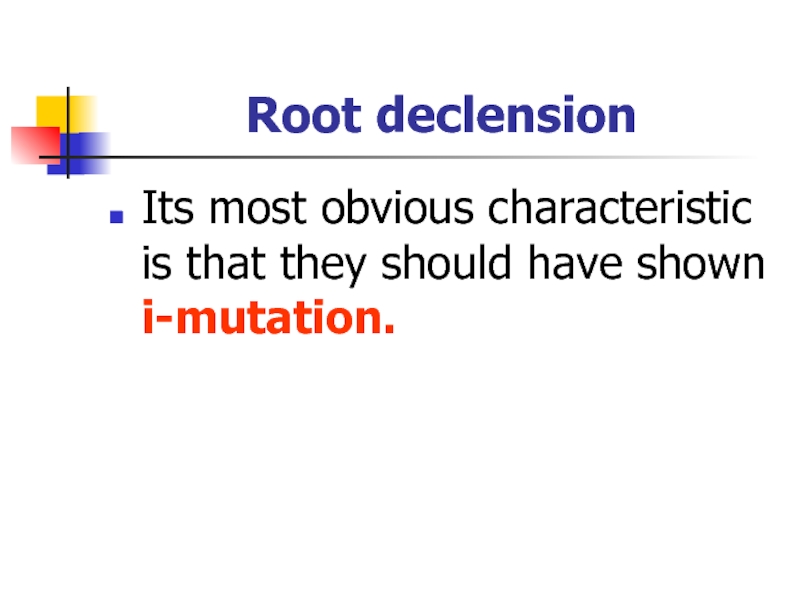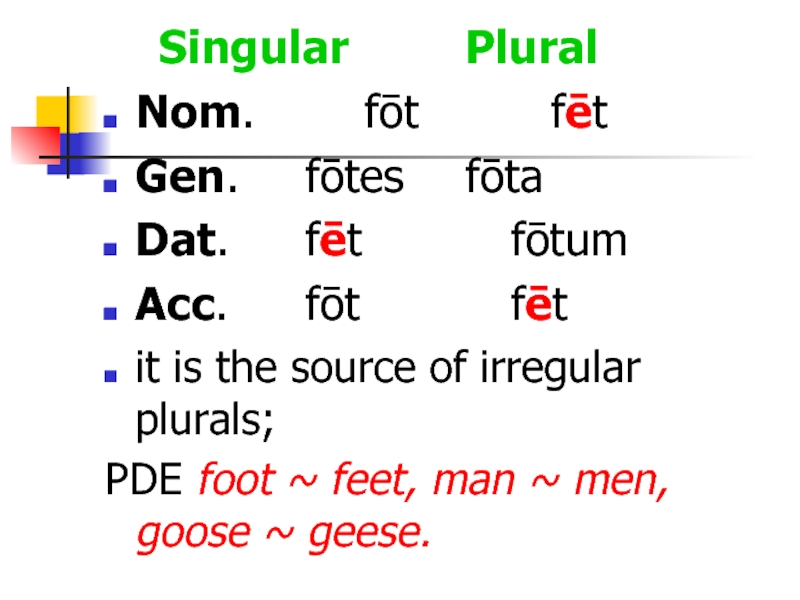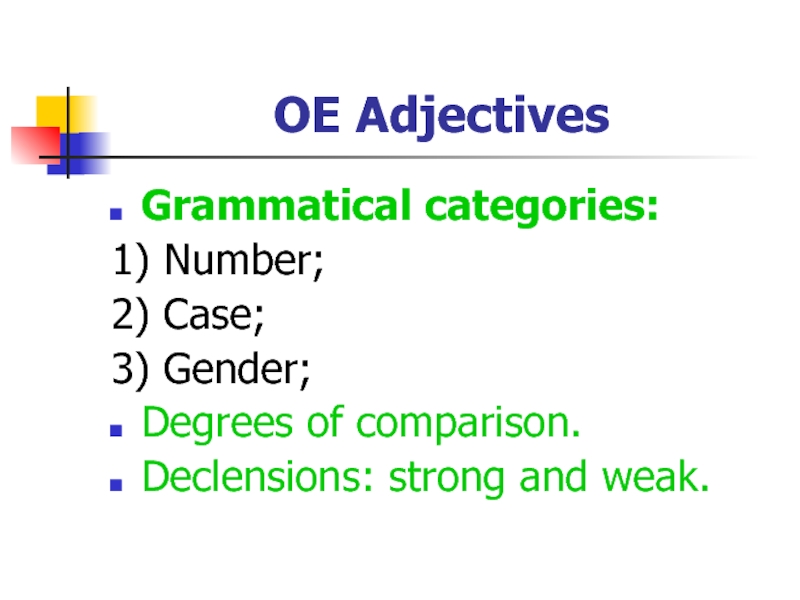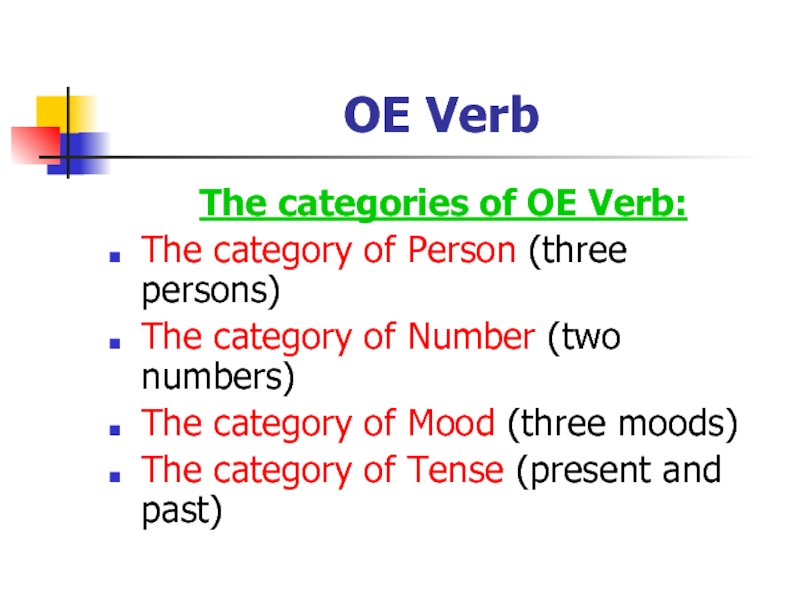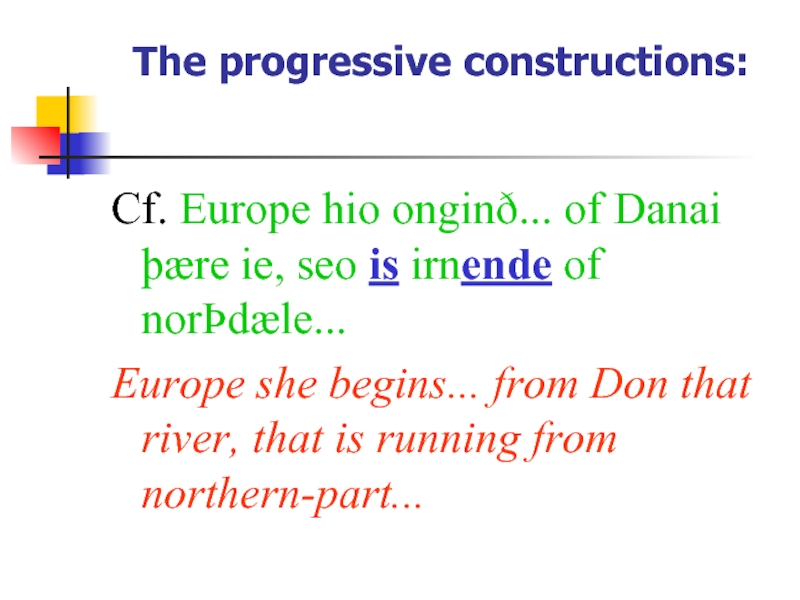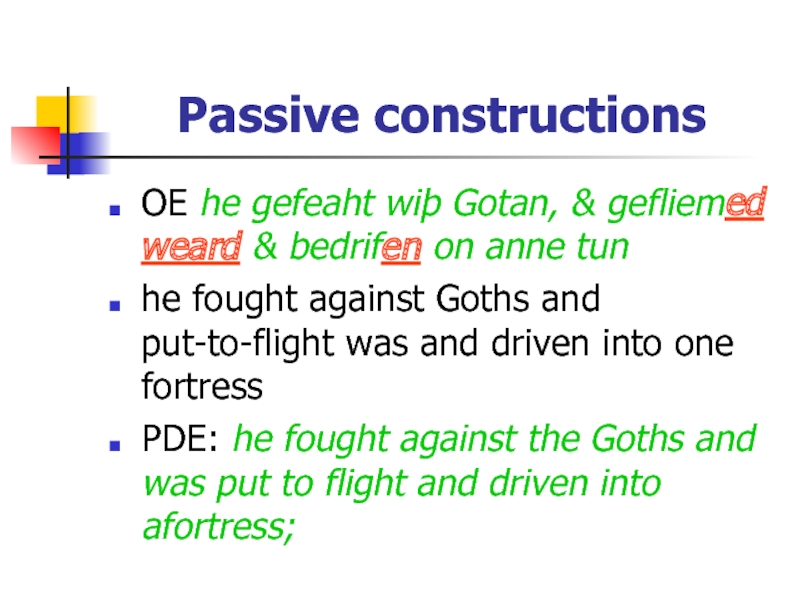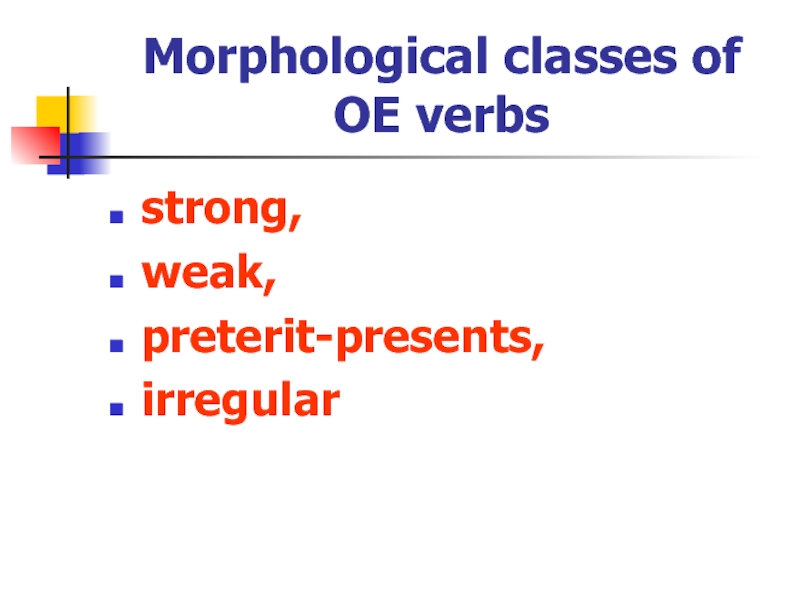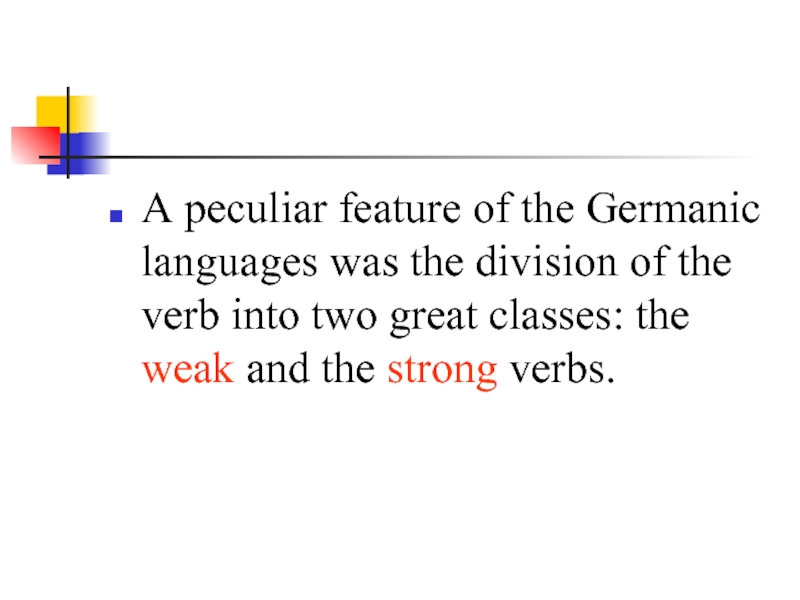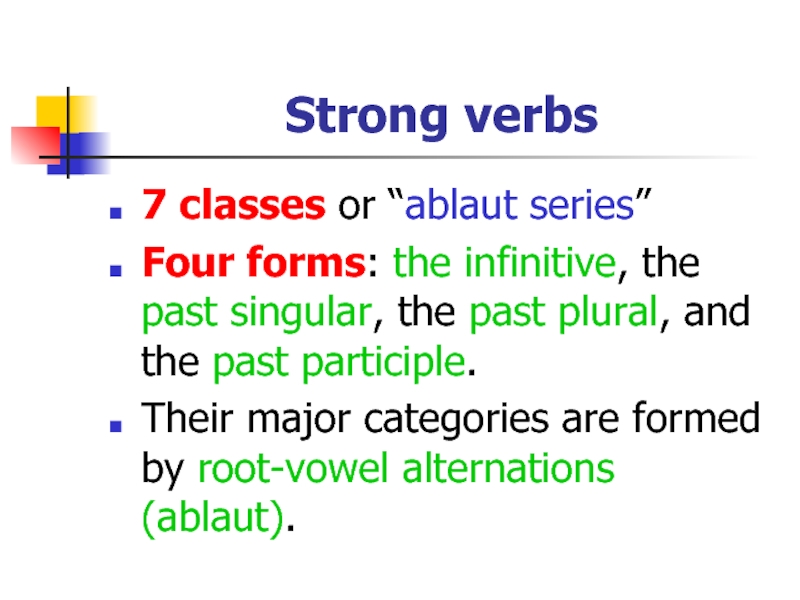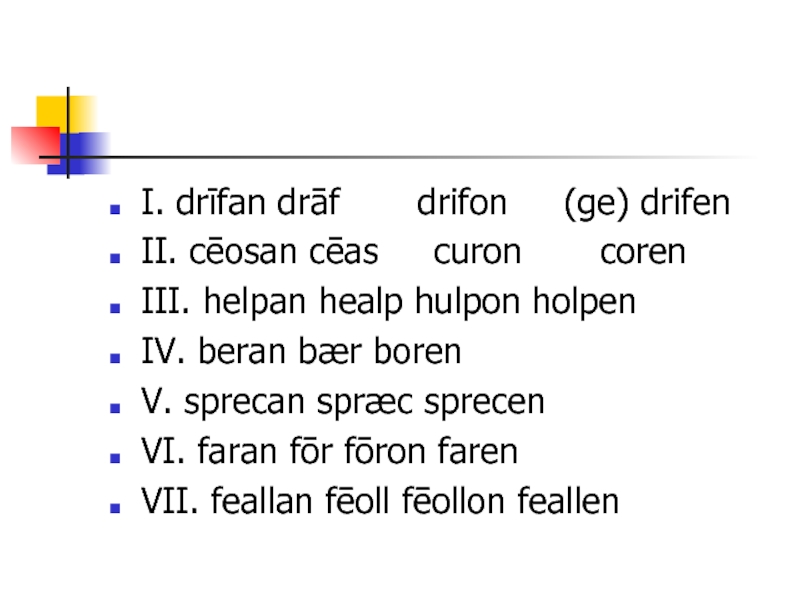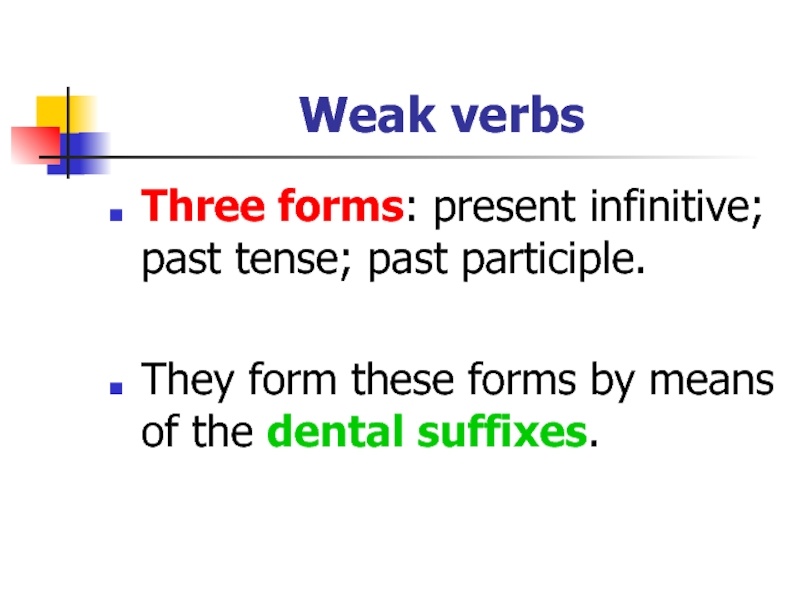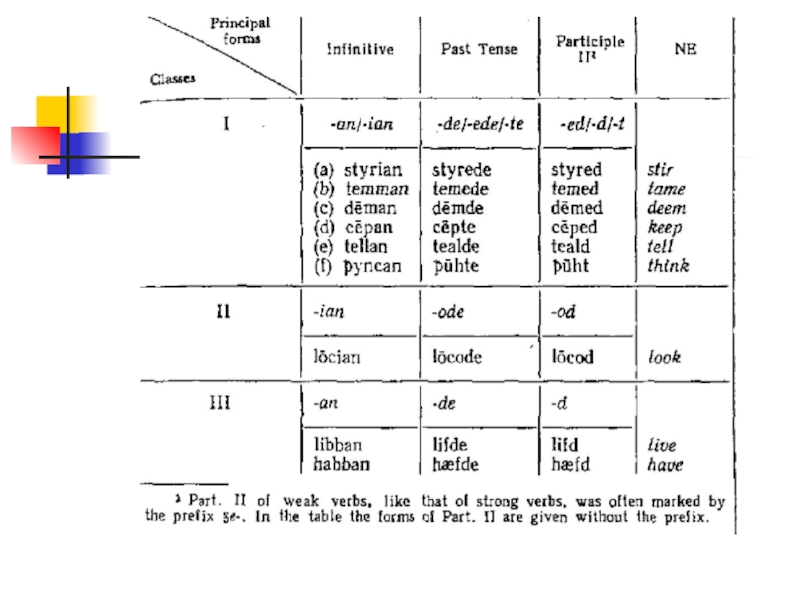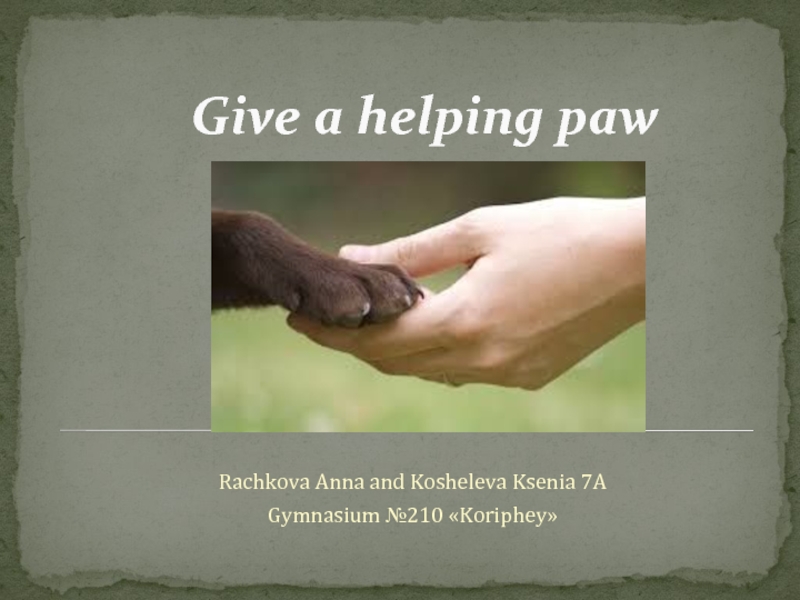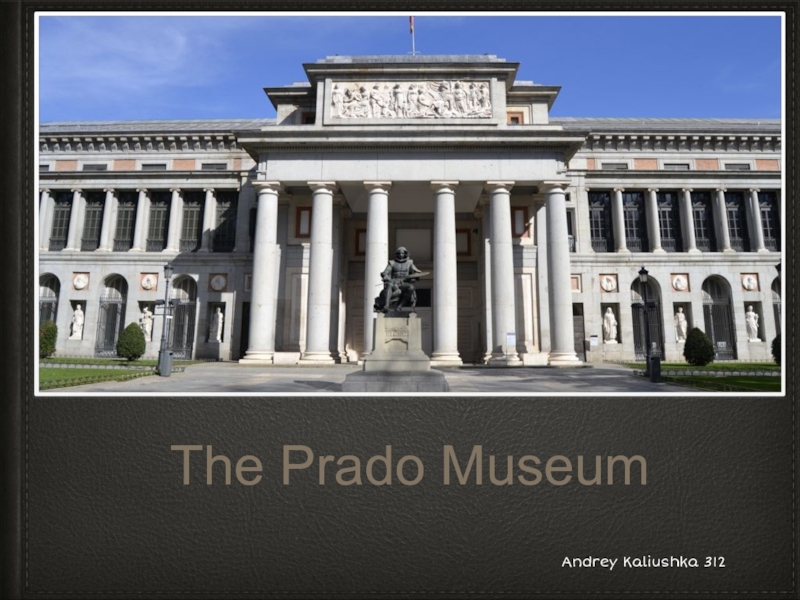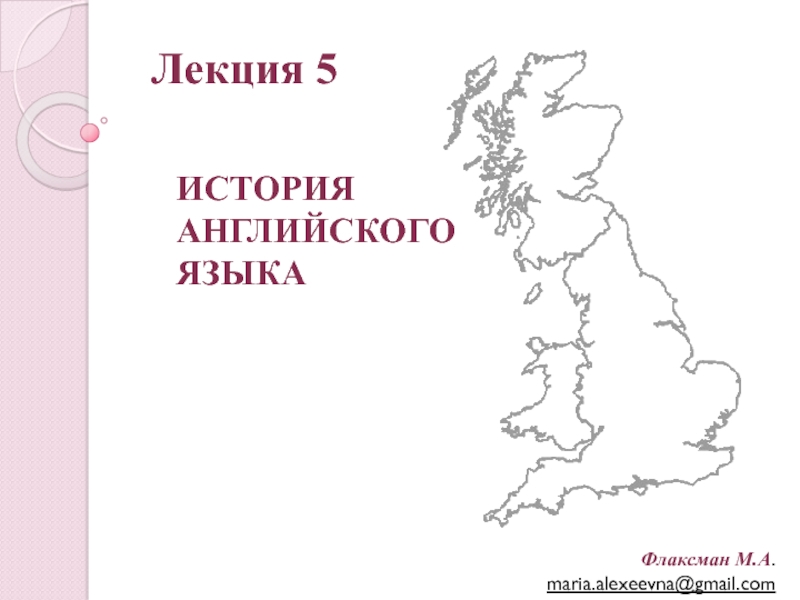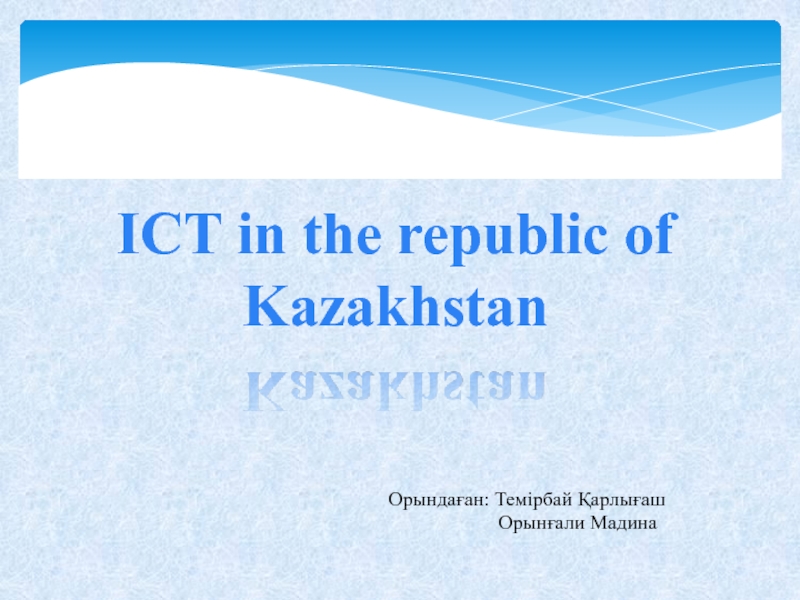- Главная
- Разное
- Дизайн
- Бизнес и предпринимательство
- Аналитика
- Образование
- Развлечения
- Красота и здоровье
- Финансы
- Государство
- Путешествия
- Спорт
- Недвижимость
- Армия
- Графика
- Культурология
- Еда и кулинария
- Лингвистика
- Английский язык
- Астрономия
- Алгебра
- Биология
- География
- Детские презентации
- Информатика
- История
- Литература
- Маркетинг
- Математика
- Медицина
- Менеджмент
- Музыка
- МХК
- Немецкий язык
- ОБЖ
- Обществознание
- Окружающий мир
- Педагогика
- Русский язык
- Технология
- Физика
- Философия
- Химия
- Шаблоны, картинки для презентаций
- Экология
- Экономика
- Юриспруденция
OЕ morphology. OЕ syntax. (Lecture 2) презентация
Содержание
- 1. OЕ morphology. OЕ syntax. (Lecture 2)
- 2. An Outline Grammatical categories of the Noun
- 3. PIE had been an inflected language
- 4. Noun Grammatical categories: Case Number Gender Noun declensions
- 5. The Category of Case 4 cases:
- 6. The Category of Number Sg. and
- 7. The Category of Gender MFN Present-day English
- 8. Noun declensions A group of nouns which
- 9. Types of declensions in OE: strong declension weak declension root declension minor declensions
- 10. strong declension a-stems, ō-stems, i-stems, u-stems.
- 11. strong declension (a-stems masculine)
- 12. The a-stems form the most important declension
- 13. weak declension n-stems nouns This declension gave
- 15. Root declension Its most obvious characteristic is that they should have shown i-mutation.
- 16. Singular Plural Nom.
- 17. OE Adjectives Grammatical categories: 1) Number; 2)
- 18. OE Verb The categories of OE Verb:
- 19. The progressive constructions: Cf. Europe hio
- 20. The perfect and plusperfect constructions Cf. Ic
- 21. Passive constructions OE he gefeaht wiþ Gotan,
- 22. Morphological classes of OE verbs strong, weak, preterit-presents, irregular
- 23. A peculiar feature of the Germanic
- 24. Strong verbs 7 classes or “ablaut series”
- 25. I. drīfan drāf
- 26. Weak verbs Three forms: present infinitive; past
- 28. OE Syntax OE was a highly inflected
Слайд 2An Outline
Grammatical categories of the Noun in OE
The Grammatical Categories
of the Adjective in OE
Grammatical Categories of the Verb in OE
The Morphological Classification of the OE Verbs
Principal Features of OE Syntax
Grammatical Categories of the Verb in OE
The Morphological Classification of the OE Verbs
Principal Features of OE Syntax
Слайд 3
PIE had been an inflected language and PG had retained inflections
to a greater a lesser extent.
In grammar, OE carried out some simplifications of the PG system
In grammar, OE carried out some simplifications of the PG system
Слайд 5The Category of Case
4 cases:
Nominative (the subject case), Accusative (
the object case), Genitive (indicating possession)
Dative (used after most prepositions and also as the indirect object).
Dative (used after most prepositions and also as the indirect object).
Слайд 6
The Category of Number
Sg. and Pl.
Nominative dæġ
dagas
Accusative dæġ dæġ
Genitive dæġes daga
Dative dæġe dagum
Accusative dæġ dæġ
Genitive dæġes daga
Dative dæġe dagum
Слайд 7The Category of Gender
MFN
Present-day English has only natural gender,
Gender in OE
is grammatical.
Cf. OE moegden (girl), wīf (wife), bearn (child, son), and cild (child) are in fact neuter.
Cf. OE moegden (girl), wīf (wife), bearn (child, son), and cild (child) are in fact neuter.
Слайд 8Noun declensions
A group of nouns which all have the same set
of inflexions attached to them are the members of a particular declension.
Слайд 11strong declension
(a-stems masculine)
Singular
Plural
stān stānas
stānes stāna
stāne stānum
stān stānas
stān stānas
stānes stāna
stāne stānum
stān stānas
Слайд 12The a-stems form the most important declension for the later history
of the language.
Cf. ModE stones – OE stānas
the plural inflexion -as is the antecedent of the modern standard plural marker.
Cf. ModE stones – OE stānas
the plural inflexion -as is the antecedent of the modern standard plural marker.
Слайд 13weak declension
n-stems nouns
This declension gave the later -en plural
Cf. ModE oxen
( < OE oxan)
Слайд 16 Singular Plural
Nom. fōt
fēt
Gen. fōtes fōta
Dat. fēt fōtum
Acc. fōt fēt
it is the source of irregular plurals;
PDE foot ~ feet, man ~ men, goose ~ geese.
Gen. fōtes fōta
Dat. fēt fōtum
Acc. fōt fēt
it is the source of irregular plurals;
PDE foot ~ feet, man ~ men, goose ~ geese.
Слайд 17OE Adjectives
Grammatical categories:
1) Number;
2) Case;
3) Gender;
Degrees of comparison.
Declensions: strong and weak.
Слайд 18OE Verb
The categories of OE Verb:
The category of Person (three persons)
The
category of Number (two numbers)
The category of Mood (three moods)
The category of Tense (present and past)
The category of Mood (three moods)
The category of Tense (present and past)
Слайд 19The progressive constructions:
Cf. Europe hio onginð... of Danai þære ie, seo
is irnende of norÞdæle...
Europe she begins... from Don that river, that is running from northern-part...
Europe she begins... from Don that river, that is running from northern-part...
Слайд 20The perfect and plusperfect constructions
Cf. Ic hæbbe gebunden þone feond;
I have
bound that enemy”
Слайд 21Passive constructions
OE he gefeaht wiþ Gotan, & gefliemed weard & bedrifen
on anne tun
he fought against Goths and put-to-flight was and driven into one fortress
PDE: he fought against the Goths and was put to flight and driven into afortress;
he fought against Goths and put-to-flight was and driven into one fortress
PDE: he fought against the Goths and was put to flight and driven into afortress;
Слайд 23
A peculiar feature of the Germanic languages was the division of
the verb into two great classes: the weak and the strong verbs.
Слайд 24Strong verbs
7 classes or “ablaut series”
Four forms: the infinitive, the past
singular, the past plural, and the past participle.
Their major categories are formed by root-vowel alternations (ablaut).
Their major categories are formed by root-vowel alternations (ablaut).
Слайд 25
I. drīfan drāf drifon (ge) drifen
II.
cēosan cēas curon coren
III. helpan healp hulpon holpen
IV. beran bær boren
V. sprecan spræc sprecen
VI. faran fōr fōron faren
VII. feallan fēoll fēollon feallen
III. helpan healp hulpon holpen
IV. beran bær boren
V. sprecan spræc sprecen
VI. faran fōr fōron faren
VII. feallan fēoll fēollon feallen
Слайд 26Weak verbs
Three forms: present infinitive; past tense; past participle.
They form
these forms by means of the dental suffixes.
Слайд 28OE Syntax
OE was a highly inflected language.
Meaning was determined by
case endings: that is, the relationship among words in a sentence was determined not by the word in the sentence, but by the special endings of the words
